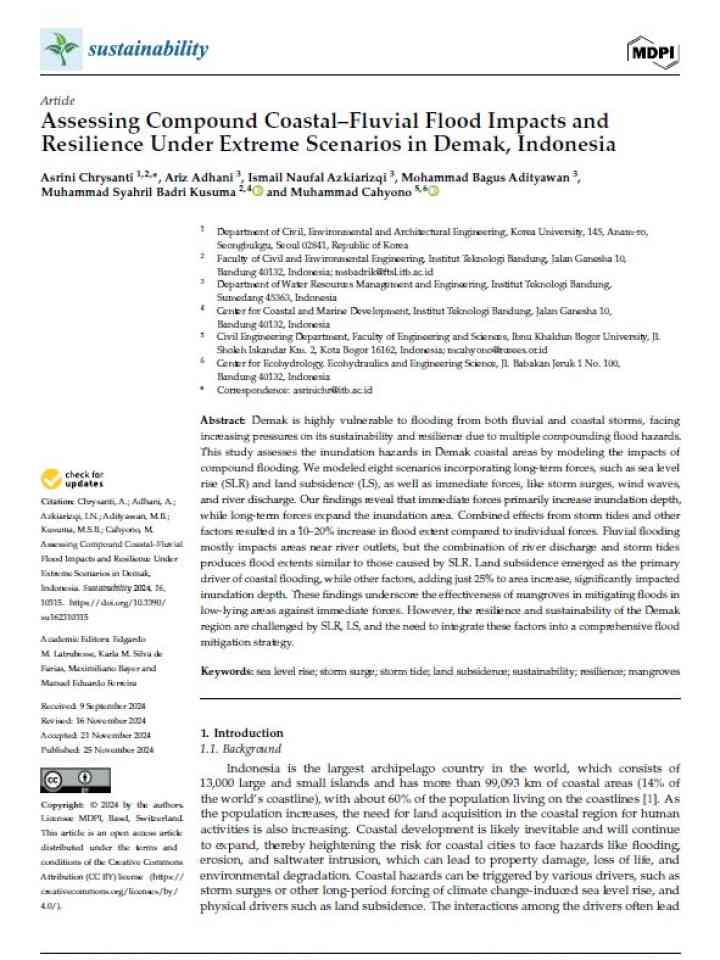Assessing compound coastal–fluvial flood impacts and resilience under extreme scenarios in Demak, Indonesia
This study assesses the inundation hazards in Demak coastal areas by modelling the impacts of compound flooding. Demak is highly vulnerable to flooding from both fluvial and coastal storms, facing increasing pressures on its sustainability and resilience due to multiple compounding flood hazards. The authors modelled eight scenarios incorporating long-term forces, such as sea level rise (SLR) and land subsidence (LS), as well as immediate forces, like storm surges, wind waves, and river discharge.
The researchers' findings reveal that immediate forces primarily increase inundation depth, while long-term forces expand the inundation area. Combined effects from storm tides and other factors resulted in a 10–20% increase in flood extent compared to individual forces. Fluvial flooding mostly impacts areas near river outlets, but the combination of river discharge and storm tides produces flood extents similar to those caused by SLR. Land subsidence emerged as the primary driver of coastal flooding, while other factors, adding just 25% to area increase, significantly impacted inundation depth. These findings underscore the effectiveness of mangroves in mitigating floods in low-lying areas against immediate forces. However, the resilience and sustainability of the Demak region are challenged by SLR, LS, and there is a need to integrate these factors into a comprehensive flood mitigation strategy.
Explore further
